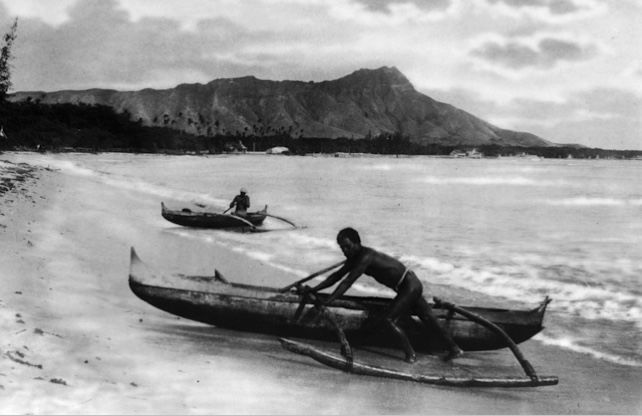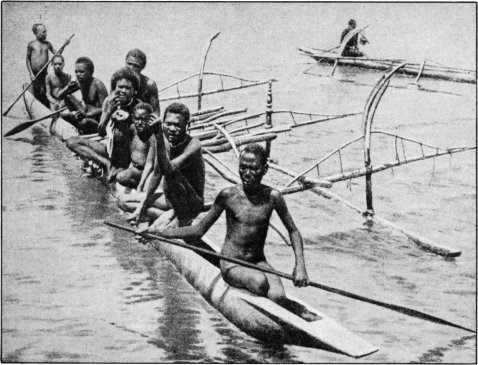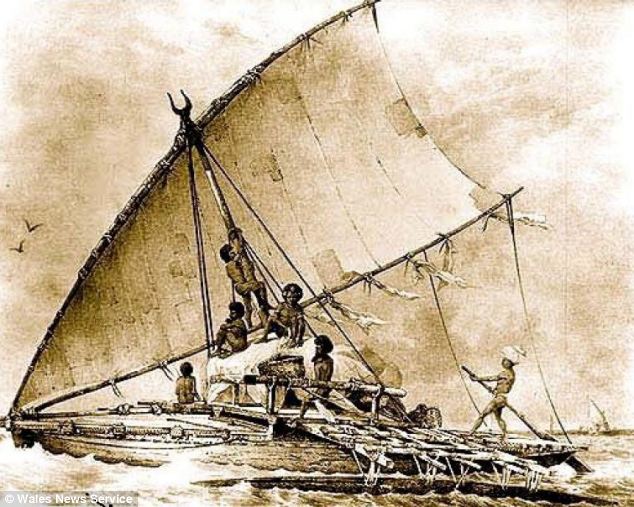
|
History of Ships Southeast Asia & Polynesia Jean Vaucher (Spring 2019) |
- Prehistoric Boats
- Southeast Asia & Polynesia

- Viking Ships
- Junks of China
- The Age of Discovery
- 19th Century
In other sections, we describe simple boats - rafts and dugout canoes - that were developped by stone age people to fish and travel on inland rivers.
But neither type is suited for long distance voyaging on open oceans: dugouts are unstable and rafts are slow and difficult to maneuver. Around the Mediterranean, further progress would only come with the Age of Metal which allowed the construction of large ships made of planks.On the south coast of China, Stone Age people achieved stability in another way: fitting their dugouts with outriggers, one or two smaller logs mounted parallel to the main hull by long poles.
Over time, this basic design would evolve in various ways: adding sails for speed and using a platform over two full canoes to allow migrating groups to travel for weeks out of sight of land and settle distant islands.

The technology of multi-hulled sailing vessels enabled the ancestors of the Polynesians to leave southern China around 3000 BCE [ before the Age of Metal ] and migrate through Taiwan, the Philippines and onward into the vast Pacific, eventually reaching all of its important islands such as Fiji, Tahiti, Hawaii and New Zealand.
Even more important, demographically, these early navigators settled the the Philippines as well as the islands of Indonesia, now the world's 4th most populous nation. They went on to occupy the Malay peninsula and started trading with India and lands beyond. As a final achievement, they discovered and settled Madagascar around 500 CE. The map below shows the extent of their colonization.
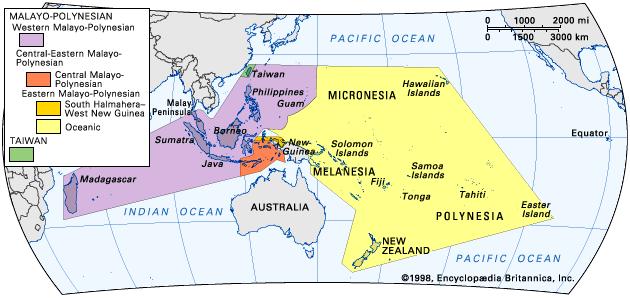

I started this at the beginning of 2019 but got sidetracked developing a new Web site for
the artists of my community in Montreal.
I hope to get the Polynesian chapter finished in the coming months.
The following text will be in a state of flux as I organize and simplify the material.
Migrations
The ancestors of our navigators arrived in two main waves. The first, mainly by land, happened about 40,000 years ago.
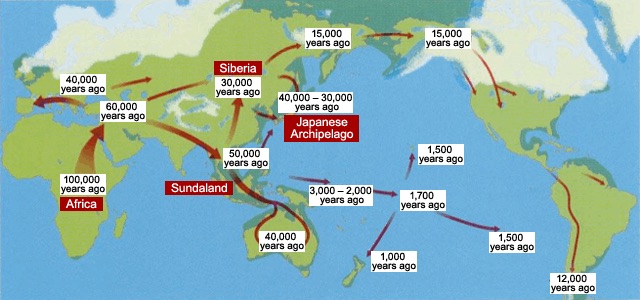
This was the time of the Ice Age, when continental glaciers covered up to 30% of the world's land mass and tied up huge volumes of water in ice sheets 1500–3000 m thick, resulting in sea level drops of 100 m or more. During glaciations, many modern-day islands were connected together or linked to continents. For example, England was connected to Europe, Siberia to America and Taiwan to Asia. Similarly, Sumatra, Java, Bali, and Borneo were joined to each other and to the mainland in what is known as the Sunda peninsula. Australia and New Guinea also formed one land mass, called Sahul.
However, the Philippines and the eastern islands--Sulawesi, Lombok, Flores, Timor, the Moluccas -- remained separated by deep channels which presented significant obstacles to the spread of animals ( and people ). This boundary between the asian and island ecological zones is known as the Wallace line.
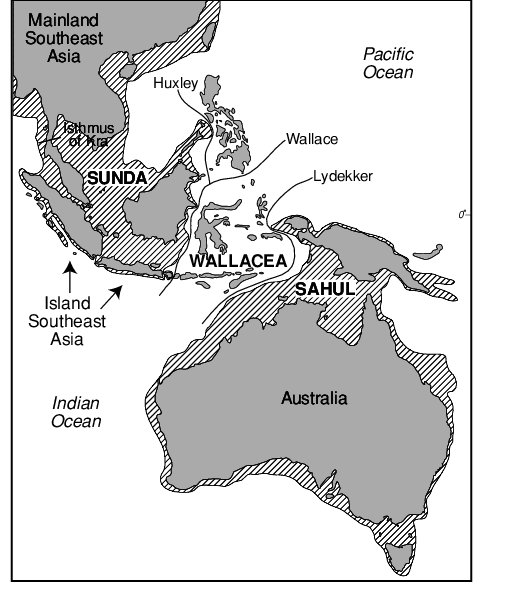
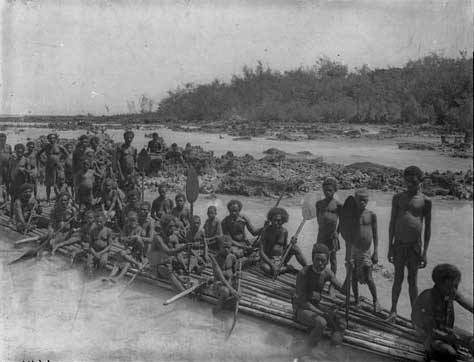
Pacific Migrations
However, the Wallace Line couldn't stop Man or his predecessors. Stone tools found on Flores, an island midway between Java and Australia, indicate that Homo erectus was able to make short ocean crossings (~15 miles) as early as 700,000 years ago. These early settlers were long extinct when the first Homo Sapiens hunter-gatherers emerged from Africa around 60,000 years ago, occupying India then Asia. Using simple rafts, they gradually dispersed through the large islands of South-East Asia, eventually reaching and populating New Guinea and Australia about 25,000 years ago. Present day aborigines are the descendants of this first wave of migration.
The second wave
The second set of migrations to the Orient occurred 20,000 years later. These people followed the northern route, that would become known as the SILK Road, around the Himalayas into northern China. Adapting to the colder climate, the new migrants evolved asiatic features and a lighter skin. They gradually moved south, filling the sub-continent. At the end of the ice age, some 20,000 years after they had first arrived, they underwent the same neolithic revolution that occurred in the fertile crescent. They developped farming, herding and sophisticated tools and settled into villages.The Polynesians are thought to be descendants of the Baiyue [Wikipedia], a people who lived along the south China coast in what is now Fujian province and gained gained their livelihood mostly from fishing and hunting, along with rice farming.
Han Chinese migration from the north, would have displaced the Yue. Some moved further south into Vietnam but the one with more advanced sailing and fishing skills moved off shore to Taiwan. Many centuries later, better maritime skills would have allowed them to cross to Luzon Philippines. Given a few thousand years, they were able to settle the Philippines, Borneo, Indonesia and most of Melanesia, replacing the original aboriginal occupants except on Papua-New Guinea and Australia. The Taiwan origin of Polynesians was first suggested by linguistic analysis and recently confirmed by genetic analysis.
BaiYue
According to Robert Marks (2017:142), the Yue [Wikipedia] lived in what is now Fujian province gained their livelihood mostly from fishing, hunting, and practiced some kind of swidden rice farming.[11] Prior to Han Chinese migration from the north, the Yue tribes cultivated wet rice, practiced fishing and slash and burn agriculture, domesticated water buffalo, built stilt houses, tattooed their faces and dominated the coastal regions from shores all the way to the fertile valleys in the interior mountains.[12][13][14][15][16][17][18] Water transport was paramount in the south, so the two states became advanced in shipbuilding and developed maritime warfare technology mapping trade routes to Eastern coasts of China and Southeast Asia.[19][20] They were also known for their fine swords.This migration by sea occurred over 3,000 years, with the design of boats evolving continuously to allow longer and longer voyages out of sight of land. These boats differed from Western boats in two important ways, using:
- Multi-hulls for stability and speed
- Windfoil sails to travel accross the wind
Although our seafarers missed the metal age, they had the early Neolithic package which would allow them to displace earlier settlers:
- advanced tools: sharp blades, axes and arrows [ Ref ]
- seeds for crops
- domestic animals: dogs, chickens and pigs
- pottery
- to LIVE on boats away from land and
- to EXPLORE the pacific and return to port.
Sources:
- J. Polynesian Society (2015): Review of Polynesian Sailing
- Wikipedia: Sunda Shelf
- Archeology: Ancient Seafarers
- Ice Age Migration
- The Ice Age and its effect on Human Migration WEB
